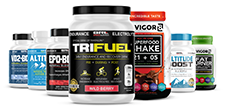Simple Plan Increases Swimmers' Lactate Threshold

Whether you're a runner, cyclist, triathlete or endurance athlete, you need to train as fast as possible without hitting the wall from high levels of lactic acid in your blood. Elite athletes and coaches know that increasing lactate threshold is essential to success.
Several factors can be modified to improve performance and endurance in athletes, including VO2max, exercise economy and lactate threshold. If you can improve your lactate threshold your race speeds will improve.
Increasing Lactate Threshold in Swimming
Let's say you're an amateur swimmer training for a local event like a triathlon. First, it's important to understand the mechanics of a swim workout.
A workout basically comprises two elements: endurance and threshold. For a short race like a sprint triathlon with a 500-meter swim, endurance should be of very little concern because you will basically sprint the entire way. So what would be the point in swimming 3 miles three times a week? Every time you hit the water you would be swimming almost 10 times your race distance. This kind of practice is known as swimming “junk miles,” and many swimmers do it.
Instead, your preparation for a short race should be geared toward increasing your lactic threshold. All world and Olympic endurance athletes incorporate lactate threshold training into their workouts.
To increase your lactate threshold, you need to swim at or above race pace in training. So let's say you do five 50-meter repeats. If your goal is to swim the 500 in 6:25 then you would want to shoot for somewhere in the neighborhood of 40 seconds per 50 meters. The first couple of times you will need a few minutes' break between each 50 meters in order to repeat the time, but as you progress in training you should be able to decrease the rest period until you are swimming each repeat at around 40 seconds. This same sort of practice can be used for just about any swim distance.
On the other hand, if you are training for a 2.4-mile Ironman swim, then endurance will be a factor. But once you feel comfortable swimming the distance in order to get faster, you will have to do the same kinds of workouts you would if you were training for the 500 — just on a bit larger scale (100 or 200 meter repeats).
There is no need to look for a long, fancy training plan that's difficult to follow. If you want to improve your times then you have to swim faster in practice. It's that simple.
Stay Focused, Add Supplements
Your training program will be difficult in the beginning, but if you stay determined to improve then you will see astronomical gains in a very short time. Combine this training workout with nutritional supplementation to increase VO2 max and exercise economy and increase your speed and endurance.
Boost your endurance with EPO-Boost and you’ll swim faster and farther. We guarantee it!
Take the next step in your training regimen: Try any BRL Sports supplement risk-free! If our natural nutritional products aren’t the best you’ve ever used, simply return your purchase for a 100% refund — no questions asked!
Also in Inspiration & Perspiration

High Altitude Supplements: Complete Guide to Training & Prevention (Altitude Sickness Solutions)
Support endurance and reduce altitude stress with supplements that improve oxygen efficiency, stamina, and recovery in high-altitude conditions.

Best Supplements For Runners: Complete Guide By Training Phase (Base, Peak, Taper & Race Day)
Discover the best supplements for runners by training phase—base, peak, taper, and race day—to boost endurance, recovery, and performance.

Creatine for Endurance vs. Sprint Efforts
Creatine isn’t just for power—learn how it boosts sprint speed, recovery, and endurance performance.



